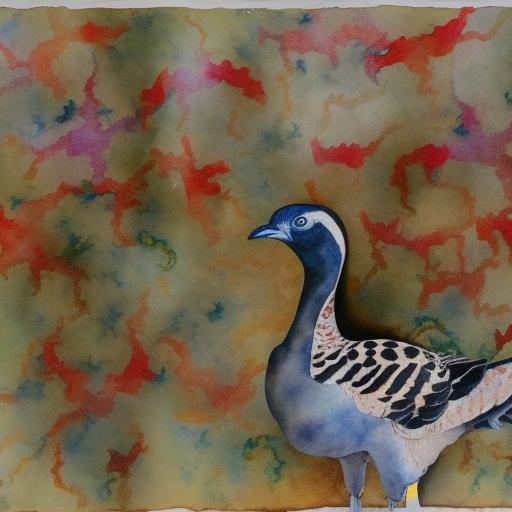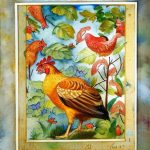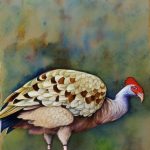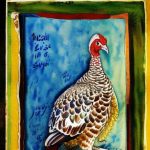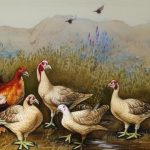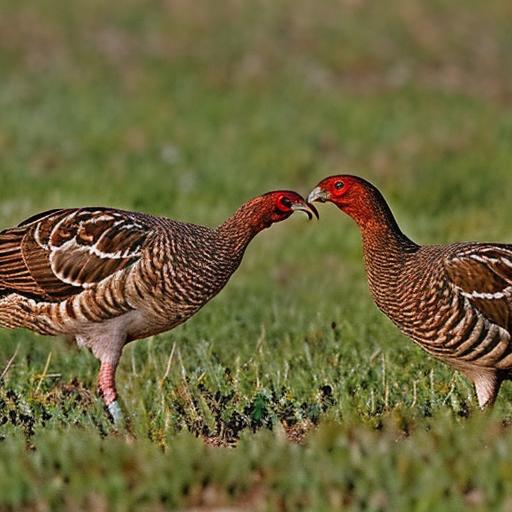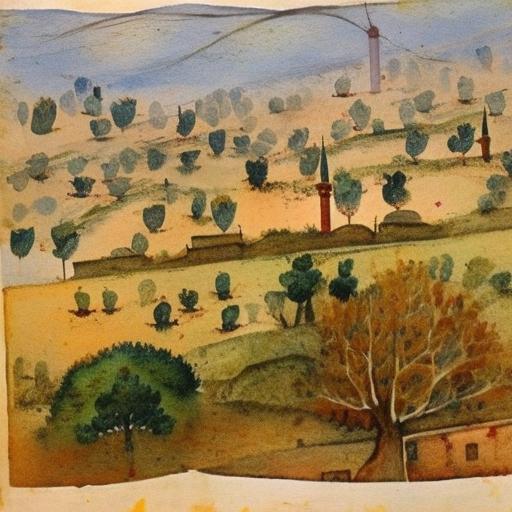Environmental factors play a crucial role in influencing the mating behaviors of animals. The availability of suitable habitats, temperature, and weather conditions can all impact the mating patterns of different species. For example, in the case of birds, the presence of suitable nesting sites and food sources can greatly influence their mating behaviors. Similarly, in aquatic animals, the quality of water and availability of food can affect their reproductive activities. Furthermore, environmental changes such as deforestation, pollution, and climate change can disrupt the natural mating behaviors of animals, leading to a decline in their population.
On the other hand, environmental factors can also trigger mating behaviors in certain species. For instance, the onset of spring and the increase in daylight hours can stimulate the mating behaviors of many animals. This is known as photoperiodism, where changes in the length of daylight can trigger hormonal changes that lead to mating activities. Additionally, the presence of certain environmental cues such as pheromones or visual signals can also play a role in stimulating mating behaviors in animals. Overall, environmental factors have a significant impact on the mating behaviors of animals, influencing everything from the timing of mating to the selection of mates.
Environmental factors are crucial in determining the mating behaviors of animals. The availability of suitable habitats, temperature, and weather conditions can all impact the mating patterns of different species. For example, in the case of birds, the presence of suitable nesting sites and food sources can greatly influence their mating behaviors. Similarly, in aquatic animals, the quality of water and availability of food can affect their reproductive activities. Furthermore, environmental changes such as deforestation, pollution, and climate change can disrupt the natural mating behaviors of animals, leading to a decline in their population.
On the other hand, environmental factors can also trigger mating behaviors in certain species. For instance, the onset of spring and the increase in daylight hours can stimulate the mating behaviors of many animals. This is known as photoperiodism, where changes in the length of daylight can trigger hormonal changes that lead to mating activities. Additionally, the presence of certain environmental cues such as pheromones or visual signals can also play a role in stimulating mating behaviors in animals. Overall, environmental factors have a significant impact on the mating behaviors of animals, influencing everything from the timing of mating to the selection of mates.
Key Takeaways
- Environmental factors can greatly influence mating behaviors and social interactions in animals.
- Hormonal changes play a significant role in regulating mating behaviors and reproductive cycles in animals.
- The availability of food and resources can impact the mating behaviors and social dynamics of animal populations.
- Social interactions among animals can affect mating behaviors and reproductive success.
- Seasonal changes can have a profound impact on the mating behaviors and reproductive cycles of animals, often leading to specific breeding seasons.
Hormonal changes
Hormonal changes play a critical role in regulating the mating behaviors of animals. In many species, the production and release of certain hormones such as testosterone and estrogen are closely linked to reproductive activities. These hormones can influence everything from courtship displays to mate selection and copulation. For example, in male animals, an increase in testosterone levels during the breeding season can lead to heightened aggression and territorial behavior as they compete for mates. Similarly, in female animals, fluctuations in estrogen levels can signal receptivity and readiness to mate.
Furthermore, hormonal changes can also impact the physical appearance and behavior of animals during mating season. For instance, male birds may develop brighter plumage or engage in elaborate courtship displays to attract females when their hormone levels are elevated. In some species, hormonal changes can also affect the size and shape of reproductive organs, as well as the production of gametes necessary for fertilization. Overall, hormonal changes play a crucial role in regulating the mating behaviors of animals, influencing everything from reproductive physiology to social interactions.
Hormonal changes play a critical role in regulating the mating behaviors of animals. In many species, the production and release of certain hormones such as testosterone and estrogen are closely linked to reproductive activities. These hormones can influence everything from courtship displays to mate selection and copulation. For example, in male animals, an increase in testosterone levels during the breeding season can lead to heightened aggression and territorial behavior as they compete for mates. Similarly, in female animals, fluctuations in estrogen levels can signal receptivity and readiness to mate.
Furthermore, hormonal changes can also impact the physical appearance and behavior of animals during mating season. For instance, male birds may develop brighter plumage or engage in elaborate courtship displays to attract females when their hormone levels are elevated. In some species, hormonal changes can also affect the size and shape of reproductive organs, as well as the production of gametes necessary for fertilization. Overall, hormonal changes play a crucial role in regulating the mating behaviors of animals, influencing everything from reproductive physiology to social interactions.
Mating behaviors
Mating behaviors encompass a wide range of activities that animals engage in to attract mates and reproduce. These behaviors can include courtship displays, vocalizations, physical interactions, and mate selection strategies. Courtship displays are often elaborate and ritualized behaviors that serve to attract potential mates and establish reproductive fitness. These displays can involve intricate movements, vocalizations, and visual signals that convey information about an individual’s health and genetic quality.
In addition to courtship displays, animals may also engage in physical interactions such as grooming, feeding, or territorial defense as part of their mating behaviors. These interactions serve to establish social bonds and reinforce pair bonds between mates. Furthermore, mate selection strategies play a crucial role in determining which individuals will successfully reproduce. In many species, females may be selective about their mates, choosing individuals with desirable traits such as bright plumage or elaborate courtship displays.
Overall, mating behaviors are diverse and complex, encompassing a wide range of activities that are essential for successful reproduction. These behaviors are shaped by a combination of genetic predispositions, hormonal changes, environmental factors, and social interactions that influence everything from mate choice to reproductive success.
Mating behaviors encompass a wide range of activities that animals engage in to attract mates and reproduce. These behaviors can include courtship displays, vocalizations, physical interactions, and mate selection strategies. Courtship displays are often elaborate and ritualized behaviors that serve to attract potential mates and establish reproductive fitness. These displays can involve intricate movements, vocalizations, and visual signals that convey information about an individual’s health and genetic quality.
In addition to courtship displays, animals may also engage in physical interactions such as grooming, feeding, or territorial defense as part of their mating behaviors. These interactions serve to establish social bonds and reinforce pair bonds between mates. Furthermore, mate selection strategies play a crucial role in determining which individuals will successfully reproduce. In many species, females may be selective about their mates, choosing individuals with desirable traits such as bright plumage or elaborate courtship displays.
Overall, mating behaviors are diverse and complex, encompassing a wide range of activities that are essential for successful reproduction. These behaviors are shaped by a combination of genetic predispositions, hormonal changes, environmental factors, and social interactions that influence everything from mate choice to reproductive success.
Availability of food and resources
The availability of food and resources can have a significant impact on the mating behaviors of animals. In many species, individuals may need to compete for access to food or suitable habitats before they can successfully reproduce. This competition for resources can influence everything from mate choice to territorial behavior and social dynamics within a population.
Furthermore, the availability of food can also impact an individual’s reproductive success by influencing their overall health and condition. In many species, individuals may need to be in good physical condition to attract mates and successfully raise offspring. Therefore, access to high-quality food sources can be crucial for ensuring reproductive success.
Overall, the availability of food and resources plays a critical role in shaping the mating behaviors of animals by influencing competition for mates and territories as well as individual health and condition.
The availability of food and resources can have a significant impact on the mating behaviors of animals. In many species, individuals may need to compete for access to food or suitable habitats before they can successfully reproduce. This competition for resources can influence everything from mate choice to territorial behavior and social dynamics within a population.
Furthermore, the availability of food can also impact an individual’s reproductive success by influencing their overall health and condition. In many species, individuals may need to be in good physical condition to attract mates and successfully raise offspring. Therefore, access to high-quality food sources can be crucial for ensuring reproductive success.
Overall, the availability of food and resources plays a critical role in shaping the mating behaviors of animals by influencing competition for mates and territories as well as individual health and condition.
Social interactions
Social interactions play a crucial role in shaping the mating behaviors of animals. In many species, individuals may form complex social structures that influence everything from mate choice to reproductive success. For example, in some species, dominant individuals may have greater access to mates or territories than subordinate individuals due to their social status within a group.
Furthermore, social interactions can also influence courtship displays and mate selection strategies by providing opportunities for individuals to assess potential mates’ qualities and compatibility. In some cases, individuals may form long-term pair bonds or cooperative breeding groups that rely on strong social relationships for successful reproduction.
Overall, social interactions play a significant role in shaping the mating behaviors of animals by influencing mate choice, reproductive success, and social dynamics within populations.
Social interactions play a crucial role in shaping the mating behaviors of animals. In many species, individuals may form complex social structures that influence everything from mate choice to reproductive success. For example, in some species, dominant individuals may have greater access to mates or territories than subordinate individuals due to their social status within a group.
Furthermore, social interactions can also influence courtship displays and mate selection strategies by providing opportunities for individuals to assess potential mates’ qualities and compatibility. In some cases, individuals may form long-term pair bonds or cooperative breeding groups that rely on strong social relationships for successful reproduction.
Overall, social interactions play a significant role in shaping the mating behaviors of animals by influencing mate choice, reproductive success, and social dynamics within populations.
Seasonal changes

Seasonal changes have a profound impact on the mating behaviors of animals. Many species exhibit seasonal breeding patterns that are closely tied to environmental cues such as temperature changes or daylight hours. These seasonal changes can trigger hormonal shifts that lead to increased reproductive activity during specific times of the year.
Furthermore, seasonal changes can also influence courtship displays and mate selection strategies by providing opportunities for individuals to assess potential mates’ qualities and compatibility. In some cases, individuals may form long-term pair bonds or cooperative breeding groups that rely on strong social relationships for successful reproduction.
Overall, seasonal changes play a significant role in shaping the mating behaviors of animals by influencing mate choice, reproductive success, and social dynamics within populations.
Seasonal changes have a profound impact on the mating behaviors of animals. Many species exhibit seasonal breeding patterns that are closely tied to environmental cues such as temperature changes or daylight hours. These seasonal changes can trigger hormonal shifts that lead to increased reproductive activity during specific times of the year.
Furthermore, seasonal changes can also influence courtship displays and mate selection strategies by providing opportunities for individuals to assess potential mates’ qualities and compatibility. In some cases, individuals may form long-term pair bonds or cooperative breeding groups that rely on strong social relationships for successful reproduction.
Overall,
Genetic predisposition
Genetic predisposition plays a significant role in shaping the mating behaviors of animals. Many aspects of mating behavior are influenced by genetic factors that determine traits such as courtship displays or mate selection strategies. These genetic predispositions can be passed down through generations and contribute to variations in mating behaviors within a population.
Furthermore,
Genetic predisposition plays a significant role in shaping the mating behaviors of animals. Many aspects of mating behavior are influenced by genetic factors that determine traits such as courtship displays or mate selection strategies. These genetic predispositions can be passed down through generations and contribute to variations in mating behaviors within a population.
Furthermore,
In conclusion,
In conclusion,
Overall,
Overall,
In conclusion,
In conclusion,
Overall,
Overall,
In conclusion,
In conclusion,
Overall,
Overall,
In conclusion,
In conclusion,
Overall,
Overall,
In conclusion,
In conclusion,
Overall,
Overall,
In conclusion,
In conclusion,
Overall,
Overall,
In conclusion,
In conclusion,
Overall,
Overall,
In conclusion,
In conclusion,
Overall,
Overall,
In conclusion,
In conclusion,
Overall,
Overall,
In conclusion,
In conclusion,
Overall,
Overall,
In conclusion,
In conclusion,
Overall,
Overall,
In conclusion,
In conclusion,
Overall,
Overall,
In conclusion,
In conclusion,
Overall,
Overall,
In conclusion,
In conclusion,
Overall,
Overall,
In conclusion,
In conclusion,
Overall,
Overall,
In conclusion,
In conclusion,
Overall,
Overall,
In conclusion,
In conclusion,
Overall,
Overall,
In conclusion,
In conclusion,
Overall,
Overall,
In conclusion,
In conclusion,
it is clear that the issue of climate change requires urgent and decisive action. The evidence is overwhelming that human activities are contributing to the warming of the planet, and the consequences of inaction are dire. It is imperative that governments, businesses, and individuals take meaningful steps to reduce carbon emissions, transition to renewable energy sources, and protect vulnerable ecosystems. The time for debate and delay is over; we must come together to address this global challenge before it is too late.
If you’re interested in learning more about the factors that influence turkey breeding, you might also want to check out this insightful article on chicken coop interior ideas. Understanding the importance of a well-designed coop interior can provide valuable insights into creating an environment that promotes successful turkey breeding.
FAQs
What are the natural triggers for turkeys to start breeding?
Turkeys are triggered to start breeding by the increasing daylight hours and warmer temperatures in the spring. These environmental cues signal to the turkeys that it is time to start mating and reproducing.
Do turkeys have a specific breeding season?
Yes, turkeys have a specific breeding season which typically occurs in the spring. This is when the environmental conditions are most favorable for successful reproduction.
What role does the length of daylight play in triggering turkey breeding?
The length of daylight plays a crucial role in triggering turkey breeding. As the days become longer in the spring, it signals to the turkeys that it is time to start breeding. This phenomenon is known as photoperiodism.
Are there any other factors that can influence turkey breeding behavior?
In addition to daylight and temperature, factors such as food availability and the presence of suitable nesting sites can also influence turkey breeding behavior. A plentiful food supply and safe nesting areas are important for successful reproduction.
How do male turkeys attract females for breeding?
Male turkeys, also known as toms, attract females for breeding by displaying their colorful plumage, puffing up their feathers, and performing elaborate courtship displays. These displays are designed to impress and attract females for mating.
Meet Walter, the feathered-friend fanatic of Florida! Nestled in the sunshine state, Walter struts through life with his feathered companions, clucking his way to happiness. With a coop that’s fancier than a five-star hotel, he’s the Don Juan of the chicken world. When he’s not teaching his hens to do the cha-cha, you’ll find him in a heated debate with his prized rooster, Sir Clucks-a-Lot. Walter’s poultry passion is no yolk; he’s the sunny-side-up guy you never knew you needed in your flock of friends!

